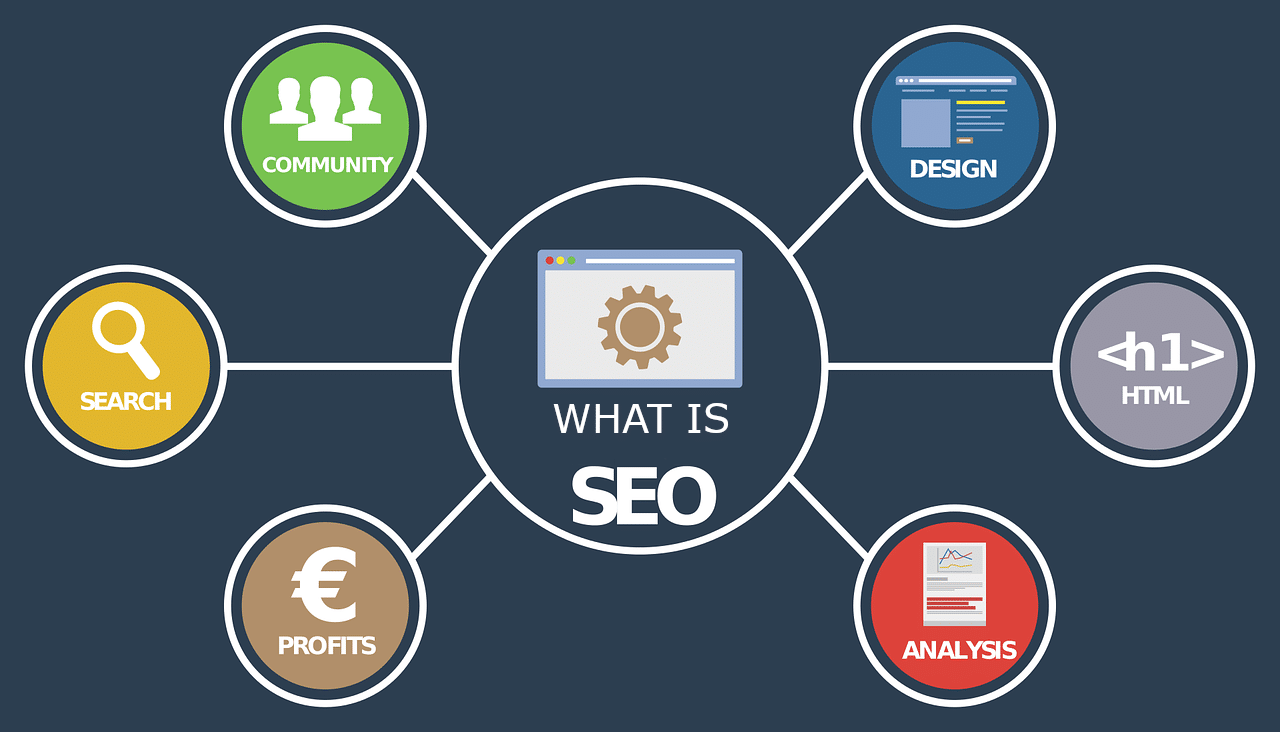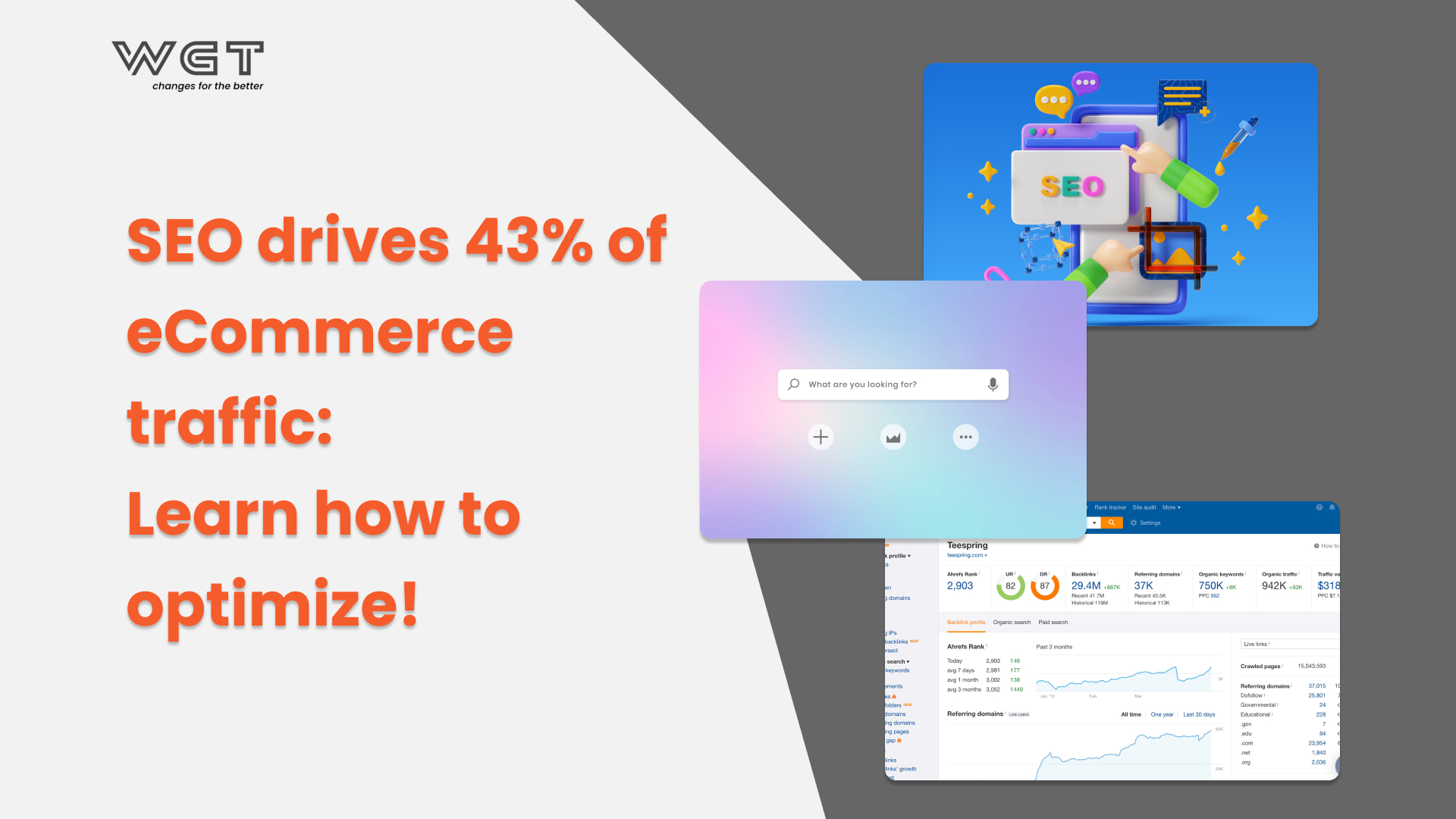
SEO basics form the foundation of an industry that’s evolving at an impressive pace. With a compound annual growth rate (CAGR) of 25.54% projected between 2024 and 2031, the SEO sector is poised to achieve a staggering market value of $99.4 billion by 2027, according to DemandSage. This rapid growth unveils immense potential for businesses worldwide. For those embarking on this journey, understanding SEO basics is the essential first step—and today, we explore exactly that.
A. SEO basics unveiled: What it truly means
Search engine optimization (SEO) involves enhancing website visibility and ranking on search engine result pages (SERPs), particularly on Google. In essence, an SEO basic is a series of strategic actions designed to improve online visibility and drive organic traffic.
With the rise of AI-powered search engines like Bing AI and Google’s Bard, the landscape of SEO is evolving. These tools leverage advanced algorithms and natural language processing to provide conversational search results, prioritizing user intent over traditional keyword matching. As a result, SEO now demands a focus on context, semantics, and high-quality, user-centric content to meet the expectations of AI-driven queries.
By understanding these shifts, businesses have the knowledge to align their SEO strategies to remain competitive in the age of AI search.

B. How SEO works: The foundation of digital visibility
The SEO basic process comprises three critical steps:
- Crawling: Search engines utilize tools like Googlebot to navigate and “crawl” website links across the internet. This tool collects data and maps links between pages.
- Indexing: Search engines analyze and organize the collected content into an expansive database known as the “Index“
- Providing Results: When users perform searches, search engines retrieve the most optimized websites from the index to display as results.
Imagine Googlebot as a librarian who collects and categorizes books (webpages) into a vast library (index). When someone seeks a book (search query), the librarian promptly finds the best match and makes it accessible.
C. Diving into SEO foundation: key types to elevate your business strategy
The world of SEO is vast, and its methods are tailored to different goals. From targeting specific keywords to optimizing entire websites, each type serves a distinct purpose. Uncover how these strategies work together to enhance website ranking based on the aspects of optimization they target!
1. On-page SEO
On-page SEO focuses on optimizing the visible elements of a website to improve its rankings in search engine results and attract relevant traffic. This type of SEO deals directly with the content and HTML components of the site.
– SEO keyword research: Identifying high-impact search terms that align with user intent and embedding them naturally within the website’s content to enhance relevance and visibility
– High-quality SEO content: Crafting engaging, value-driven content tailored to user interests, while incorporating targeted keywords to meet search engine criteria and encourage backlinks
– Internal linking: Establishing a logical internal link structure that connects related pages, aiding both user navigation and search engine crawling
– Metadata optimization: Fine-tuning HTML elements like title tags, headers, and meta descriptions to accurately describe page content and improve SERP performance
– Image SEO: Ensuring images are optimized with relevant file names, alt text, and captions to boost visibility on Google Image Search and improve accessibility
– URL structure: Designing URLs that are concise, keyword-rich, and user-friendly, facilitating both better rankings and an improved browsing experience
2. Off-page SEO
Off-page SEO addresses external factors influencing a website’s authority and relevance in the digital ecosystem. These strategies focus on activities beyond the website itself to build trust and credibility with search engines.
– Guest Blogging: Publishing articles on external sites that include backlinks to your website, enhancing authority and driving targeted traffic
– HARO (Help a Reporter Out): Contributing expert insights to journalists’ queries in exchange for media mentions and valuable backlinks
– Competitor Analysis: Evaluating competitors’ backlinks, keywords, and strategies to refine and strengthen your own SEO approach
– Internet Ads: Using paid advertisements on search engines and third-party sites to attract traffic and enhance brand recognition
– Press Release Distribution: Sharing newsworthy updates with media outlets to gain backlinks, attract audiences, and establish authority
– Brand Signals: Cultivating a strong online presence through social media interactions, directory listings, and third-party mentions, signaling credibility to search engine
3. Technical SEO
Technical SEO enhances a website’s backend infrastructure to ensure search engines can crawl, index, and rank pages efficiently. It also focuses on improving user experience by addressing performance-related aspects.
– Site Speed Optimization: Enhancing load times to create a seamless user experience and improve search rankings
– Mobile Optimization: Ensuring the website is fully responsive and functional on mobile devices, aligning with Google’s mobile-first indexing
– Crawl Error Fixing: Detecting and resolving issues that prevent search engines from accessing or indexing content effectively, such as broken links or missing pages
– Keyword Cannibalization Review: Identifying and resolving cases where multiple pages target the same keyword, consolidating content to improve rankings
– Duplicate Content Audit: Detecting and addressing duplicate content issues that can confuse search engines and lower rankings
– Site Architecture: Structuring the website logically to enhance navigation, improve user experience, and simplify search engine crawling
4. Local SEO
For businesses targeting specific geographic areas, local SEO is a game-changer. This strategy helps companies appear in local search results and on Google Maps, making it easier for potential customers nearby to find them. By optimizing for location-based searches, businesses will draw in more local clients, increasing foot traffic and driving revenue.
5. E-commerce SEO
When it comes to e-commerce websites, SEO is an essential tool for boosting product visibility. Optimizing product pages and content for search engines helps improve rankings, making it easier for customers to find the products they need. The ultimate goal of e-commerce SEO is to drive traffic, increase sales, and enhance the customer shopping experience.
D. The power of SEO: its role in business growth
Effective SEO foundation strategies go beyond improving search engine rankings. They play a pivotal role in helping businesses achieve long-term success. The impact of SEO reaches far beyond traffic—it influences conversion rates, brand recognition, and customer retention. Here’s how:
Increase organic website traffic
SEO supports driving high-quality, organic traffic to websites without the need for paid ads. By ranking higher in search results, businesses are able to attract visitors who are genuinely interested in their products or services.
Enhance brand visibility and reputation
Being highly visible on search engines enhances a company’s reputation. When a website consistently ranks at the top, it builds trust with users and solidifies its position as a credible and authoritative source of information.
Attract potential customers
A well-executed SEO strategy ensures that a business is visible to people actively seeking its offerings. This opens the door to more sales opportunities, creating a stream of qualified leads and driving revenue growth.
Increase conversions and sales
SEO is not just about attracting traffic—it’s about converting that traffic into actual sales. By improving website functionality, content quality, and user experience, SEO directly contributes to higher conversion rates and increased sales.
Build brand trust and loyalty
A consistent and high-ranking presence on search engines enables building customer trust. By offering valuable, relevant content, merchants cultivate lasting relationships with users, fostering brand loyalty and long-term growth.
Reduce marketing costs
SEO offers a cost-effective way to drive traffic and generate leads without relying on expensive paid advertising. When businesses invest in SEO foundation strategies, they can achieve sustainable, long-term results that continue to bring value without incurring ongoing costs.
E. SEO metrics to track business success
Before implementing this SEO guide, start by collecting benchmark metrics to establish a baseline. Tracking progress through specific indicators helps evaluate the effectiveness of your strategy. Let’s explore key metrics to monitor:
1. Organic Search Traffic
This metric measures the number of visitors arriving at your site through unpaid search engine results, offering a clear indicator of how well your SEO strategy is performing.
- Positive Trends: Increasing traffic suggests your content aligns with audience interests, your keywords are well-chosen, and backlink efforts are yielding results
- Negative Trends: Declining traffic could indicate technical SEO problems, highly competitive keywords, or simply the need for more time—SEO often takes at least four months to show results
2. Keyword Rankings
Tools like Google Search Console should be used following this instruction: click “Performance” > “Search results” feature to view top keywords and their performance. For advanced tracking, tools like Semrush’s Position Tracking provide insights into: keyword rankings and volumes, SERP feature appearances, competitor comparisons, and alerts for ranking changes.
3. Engagement Rate and Bounce Rate
These metrics provide insights into how users interact with your content. Engagement Rate is to track sessions lasting over 10 seconds, with conversions or multiple page views. Bounce Rate is leveraged to indicate disengaged sessions. High bounce rates may signal a mismatch between your content and users’ search intent, requiring better keyword alignment or streamlined content.
4. Conversions
Conversions reflect how effectively the strategies are turning visitors into leads or customers. There are two key metrics session conversion rate – the percentage of sessions leading to conversions, and user conversion rate – the percentage of unique visitors completing a desired action
F. Conclusion
Mastering SEO requires understanding its various types, tracking key metrics for business success, and creating content that resonates with users and search engines alike. This journey demands commitment but opens doors to growth, improved visibility, and sustained success in the ever-evolving digital landscape. In our next blog, we’ll break down the structure of SEO, exploring critical aspects like on-page and off-page optimization to help you refine your strategy even further. Stay tuned!








